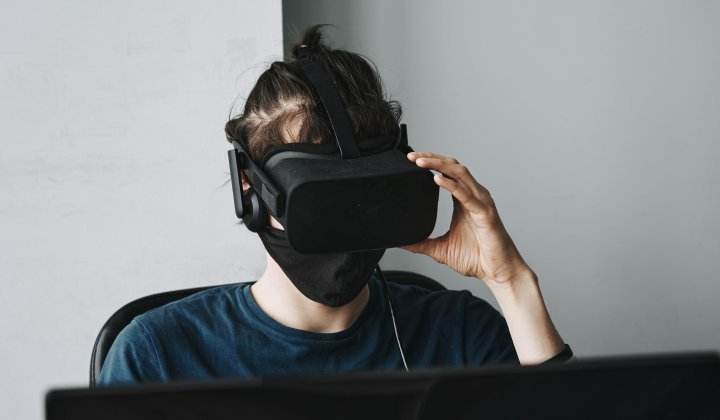What is perhaps a new challenge is how businesses adjust to the changed mindset of their workforce. We should not underestimate the long-term effect of lockdowns, social isolation and the loss of livelihoods. The impact of the virus itself – confronting one’s mortality or the devastating loss of loved ones – has forced many to re-evaluate their lives. What impact will these life audits have on businesses and their workforces?
The lockdown life audit
It started with anticipatory grief, and then the nightmare began – the tragic loss of loved ones, the demoralising loss of income, and for those who seemed to have recovered from Covid-19, the unexpected complications of long covid.
Even if you have not been directly impacted by the virus, you will know someone who has had their life derailed. For two years, this omnipresent sense of suffering has forced us all into deep introspection. The decoupling of “work” and “place of work” threw another layer onto what can only be described as a mass existential crisis.
Trends like semigration, workcations and the global ‘great resignation’ are clear signs that people are re-evaluating their lifestyles and life goals. Geo-political shifts, like Brexit, have also contributed to change in workforce dynamics as migrant workers decided to stay in their home countries after lockdown restrictions were eased.
Pace and quality of life coupled with familial and community bonds now take precedence over a paycheck and an unfulfilling job.
In the corporate world, some workers are not just quitting their jobs but changing their professions. In America, resignations have been occurring at alarming rates for tenured, long-term employees, not just those building their careers.
The resignation rate of employees with a five to 10-year tenure was 56.8% higher in 2021 than in 2020, and the rate for employees with 10 to 15 years of tenure was 54.6% higher in 2021 than in the same period of 2020.
Psychologists say that it takes just 21 days to adopt a new behavioural pattern. We’ve all been adapting to a work-from-home lifestyle for almost two years – the behavioural change is entrenched. The old mantra of work/life balance has evolved into a non-negotiable quest for work/life flexibility.
Reprioritising of rewards and benefits
In terms of rewards and benefits, the reshuffling of priorities is telling. A survey by Prudential found that 52% of employees surveyed would leave their job for one with the “right” benefits, while 77% said benefits are now a “key part of their compensation”. What was once a “nice to have” is now a “must-have”.
It is interesting, but unsurprising, to see which priorities are now being considered. Workplace safety protocols are now a basic requirement. Healthcare is the top priority, and not just long-term benefits but more immediate benefits, such as access to services for mental well-being. Childcare benefits also climbed the ranks – many employees said they would consider trading benefits like annual leave, sick days or dental plans in exchange for employer-subsidised childcare.
What used to be a one-to-one contract between employer and employee is now broader and should consider the family situation of that employee.
The anti-work movement
At first glance, the anti-work movement might be interpreted as pure laziness or lack of ambition, but there are subtler nuances which business owners should be taking heed of.
It is not a rejection of earning a living per se, but more a questioning of how that living is earned.
The ‘great resignation’, and the reprioritising of rewards and benefits, is just the tip of the future-of-work iceberg. Retaining the best talent has suddenly become an urgent challenge facing HR practitioners. A ping pong table and free food might have been the lure for a millennial workforce, but countering the anti-work movement requires a very different approach.
Gartner, the global research and advisory company, suggests that organisations move from a location-centric culture to a human-centred culture.
While working from home, many people sought refuge in nature, bonding with their pets and sitting outdoors with their laptops. Forward-thinking companies are now investing in biophilic office design to lure and retain their workforce.
For Gen Zs – the new workforce – the approach to work is with the mantra “I don’t want a job, I want a lifestyle”. They have also never understood a location-centric approach to work, because for them, “work is what I do, not a place I have to go to”.
Ironically, these two mantras are where the world is shifting, or rather, the mindset companies are struggling to adapt to.
The ‘lying flat’ movement in China
If the concept of a ‘tiger mom’ represented the relentless pressure Asian mothers placed on their children to be the best to gain entry into universities or excel in sport or the arts, then the ‘lying flat’ movement (or tang ping) is the counter revolution.
‘Lying flat’ essentially means doing the bare minimum to get by and striving for nothing more than what is absolutely essential for one’s survival. This is the antithesis of traditional Asian culture. The prized goal was academic excellence, which led to securing a good job, buying a car or a house, and then getting married and starting a family.
The movement was sparked by Luo Huazhong, a man in his mid-twenties who had embraced this minimalist lifestyle. He posted on the Baidu Tieba social media platform, “Lying flat is a state of mind – that is, I feel that many things are not worthy of my attention and energy.”
While critics call him lazy or defeatist, many of his peers feel overwhelmed and dismayed by the notion of working themselves to the bone, sacrificing happiness and quality of life.
The movement has resonated with so many young people in China that it has been publicly condemned by President Xi Jinping. However, the sentiments are global and dovetail perfectly with the anti-work movement.
The dismantling of the 9 to 5, five-day workweek
The concept of a four-day workweek is gaining ground rapidly, and it’s not just companies testing reduced working hours, but countries. Iceland was the first country to trial shorter working hours. Between 2015 and 2019, their traditional 40-hour workweek was reduced to either 35 or 36 hours, with the same pay.
Spain is busy with a three-year pilot project, while Germany is also considering a shorter workweek, specifically to stem job losses in their automotive industry.
This year, Ireland embarks on a six-month trial with 20 companies moving to a four-day workweek while the UAE reduced its existing five-day workweek to four-and-a-half days from January.
The eight-hours-per-day, 40-hours-per-week template we are now breaking free from had its origins in the late 19th century when labour unions wanted to reduce the 80+ hours factory workers were being forced to work. In the 1920s, Henry Ford introduced the five-day workweek, which was then incorporated into the American Public Contracts Act of 1936, becoming the 20th-century office worker template.
Why, then, are we still using the same template in a digital economy where optimal productivity is pegged at 6 hours per day?
The pandemic has brought forward “the future of work”, and our collective life audits reject the daily grind of commuting and the treadmill of office cubicle life. Like the ‘lying flat’ movement, a “work to live” ethos replaces “live to work”, unless you’re passionate about what you do.
Either way, businesses should forget about creating the perfect work ‘place’ but rather engineer the right work ‘experience’.
Dion Chang is the founder of Flux Trends.




